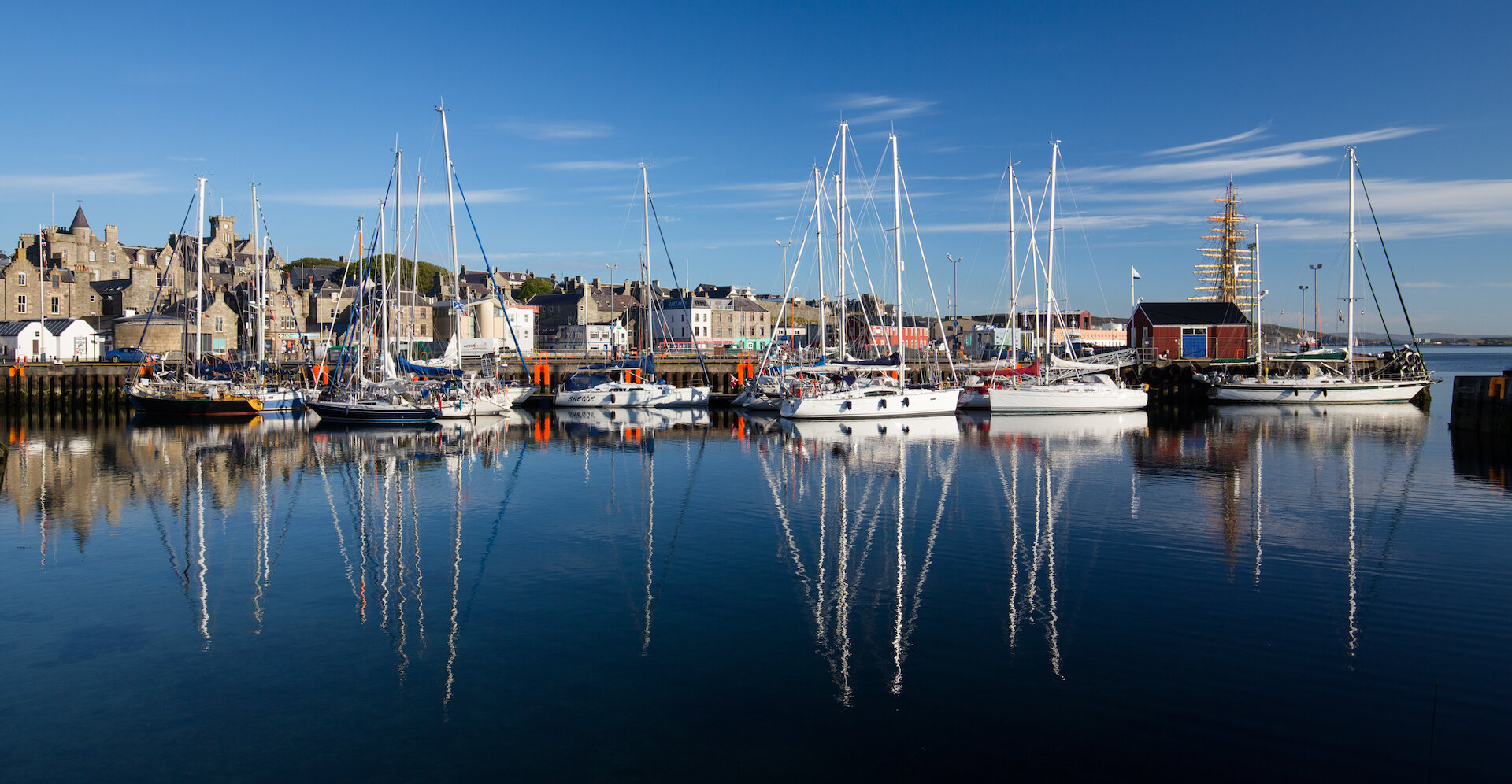A quick introduction
Lerwick is Shetland's only town, with a population of about 7,500 – although about half of the islands' 22,000 people live within 10 miles of the burgh.
Founded as an unofficial marketplace to service 17th century Dutch herring fleets, Lerwick took a long time to grow. Because of its illegal status (and alleged immorality!) the straggling hamlet around the shore of Leir Wick ('muddy bay') was demolished by order of the Scalloway court in 1615 and 1625.
Most of the sandstone buildings on the waterfront date from the 18th century, although a few are older. The narrow main street still follows the old shoreline but modern harbour works have been built out in front of shops and warehouses that once stood in the sea.
No-one designed the old town – it just grew – but, up beyond the Hillhead, Victorian architects laid out a "new town" of spacious villas and public parks, dominated by Lerwick Town Hall – a monument to the civic pride of the 1880s.
How to get to Lerwick
Lerwick is the main port for the NorthLink ferry from Aberdeen and Kirkwall. It is 24 miles by road from Sumburgh Airport.
Where to stay
For a list of accommodation providers in Lerwick, see Stay.Shetland.Org, Visit Scotland, Airbnb and Shetland Visitor.



